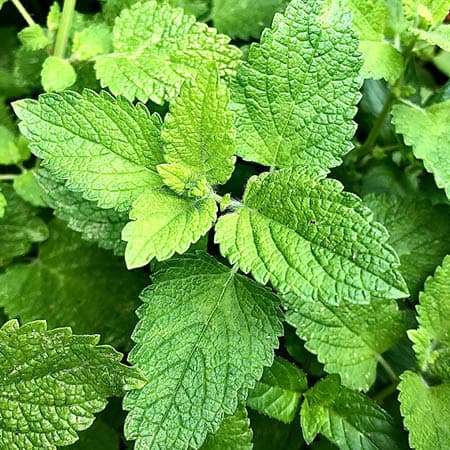
Description:
The leaves are bright green and wrinkled, and they smell strongly of lemon. Though commonly confused with beebalm (Monarda spp.), it is not related to that plant. The plants have spreading stems and reach a height of roughly two feet. At each stem joint, the slightly serrated, oval or heart-shaped leaves are held firmly in pairs.
Habitat
Although native to mountainous regions of southern Europe and northern Africa, this perennial of the mint family has naturalized in practically every warm or temperate region on Earth.
Uses
A member of the mint family, lemon balm (Melissa officinalis) is regarded as a relaxing herb. As far back as the Middle Ages, it was used to treat stomach pain and discomfort (including gas and bloating, as well as colic), induce sleep, enhance appetite, and reduce tension and anxiety.

Varieties
Common types are “All Gold” (totally golden leaves) and “Aurea” (light green foliage with gold patches). Although there are numerous lemon balm-like species from Asia and the Mediterranean, only Melissa officinalis L. is grown commercially.
Plant Care
- Soils
Most soil types will support the growth of lemon balm as long as it is rich, humus-filled, damp, and well-drained.
- Planting and Spacing
Lemon balm should be planted 18 to 24 inches apart because it grows to a height of 2 to 3 feet. Although it can tolerate slight shade, lemon balm likes direct sunlight. Larger, more succulent leaves are typically produced by plants that receive some shade.
- Water
Hardy perennial herbs like lemon balm thrive when they are not water strained. To prevent root rot in the plants, keep the soil damp but not soggy. To preserve soil water, mulch the area surrounding the plants and use drip or overhead irrigation to provide water.
- Fertilizer
Fertilizer developed for general use works well with lemon balm. Feed again after harvest to promote more leaf growth, and in the spring to stimulate new growth. Poor flavor development and excessive growth are the results of over fertilization.
Table





